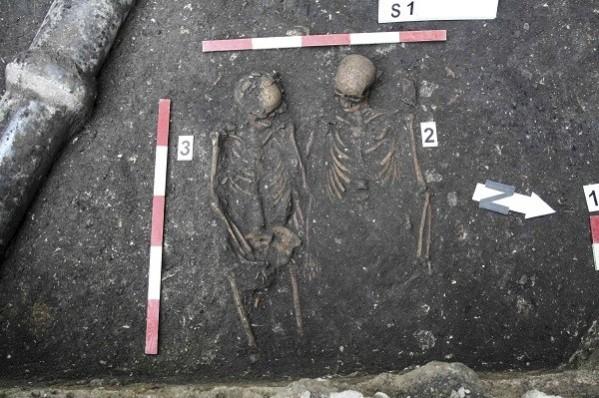
Archaeologists have unearthed two skeletons of a male and a female who were buried holding hands in a cemetery in Cluj-Napoca, Romania.
Cluj-Napoca Institute of Archaeology and History of Art researchers were excavating the inner courtyard of the Sigismund Toduta Music High School, which was originally a 15th century Dominican monastery. The team uncovered several bodies, including a young couple holding hands in a cemetery at the monastery.
Senior researcher Adrian Rusu said that the bodies were buried somewhere between 1450 and 1550. The discovery has surprised the researchers, as it is very rare to find two bodies buried in the same place during the medieval ages, reports Daily Mail.
According to Rusu and his team, the male died after suffering a broken sternum following a blow from a blunt object. "We can see that the man had suffered a severe injury that left him with a broken hip from which he probably died. We believe the injury was caused after he was hit by something very blunt and hard," Rusu was quoted as saying by the Daily Mail.
However, it is not clear as to what caused the death of his female companion as the skeleton was healthy. According to Rusu, it is highly unlikely that the female committed suicide as killing self was deemed as a sin during that period. In case the female had killed herself, her body would not have been buried with the male as it was considered as a holy place.
The research team speculates that the female could have died from a heart attack or stroke brought on by the shock of her partner's accidental death, according to The History Blog. Besides, the young couple's skeletons, archaeologists also unearthed two other sets of remains in the same area - one that of an infant and leg bones of another individual. It is not yet known as to what relations these two had with the lovers.
Researchers determine that the lovers could be wealthy or had wealthy family members to get buried in a premium spot inside the monastery.
"This was an inner courtyard with a fountain and decorative garden and an area for the monks to pray and read religious texts. Placement here was like a turbo boost of sin forgiveness, something particularly desirable when a person died unexpectedly and thus without a final confession," the report in The History Blog said.
Similarly, two years ago (2011), archaeologists uncovered the 1,500-year-old male and female skeletons buried holding hands. The discovery of the couple, buried during the 5th century, was made while archaeologists were excavating an ancient Roman palace in the Italian town of Mutina, which is now called as Modena.










